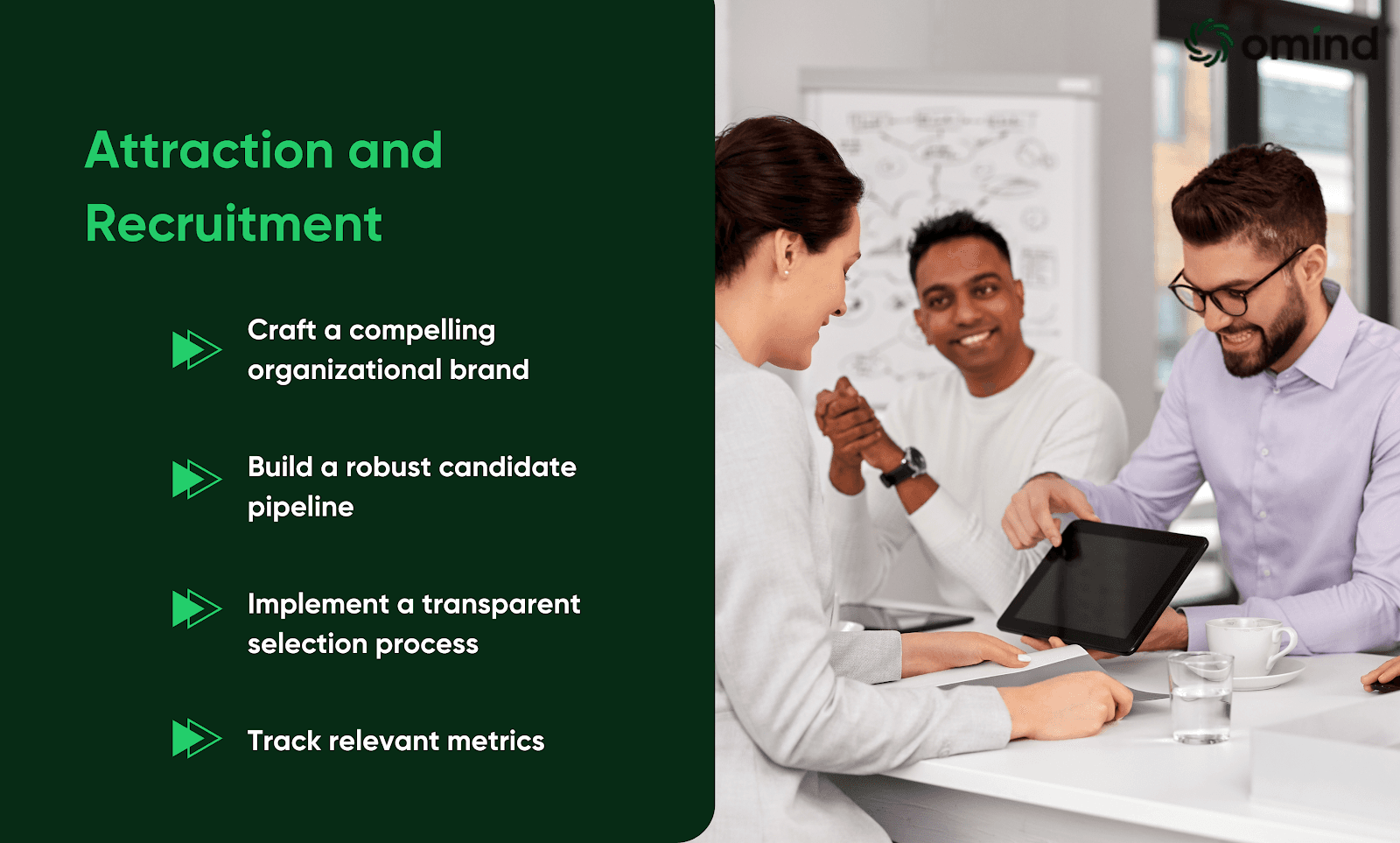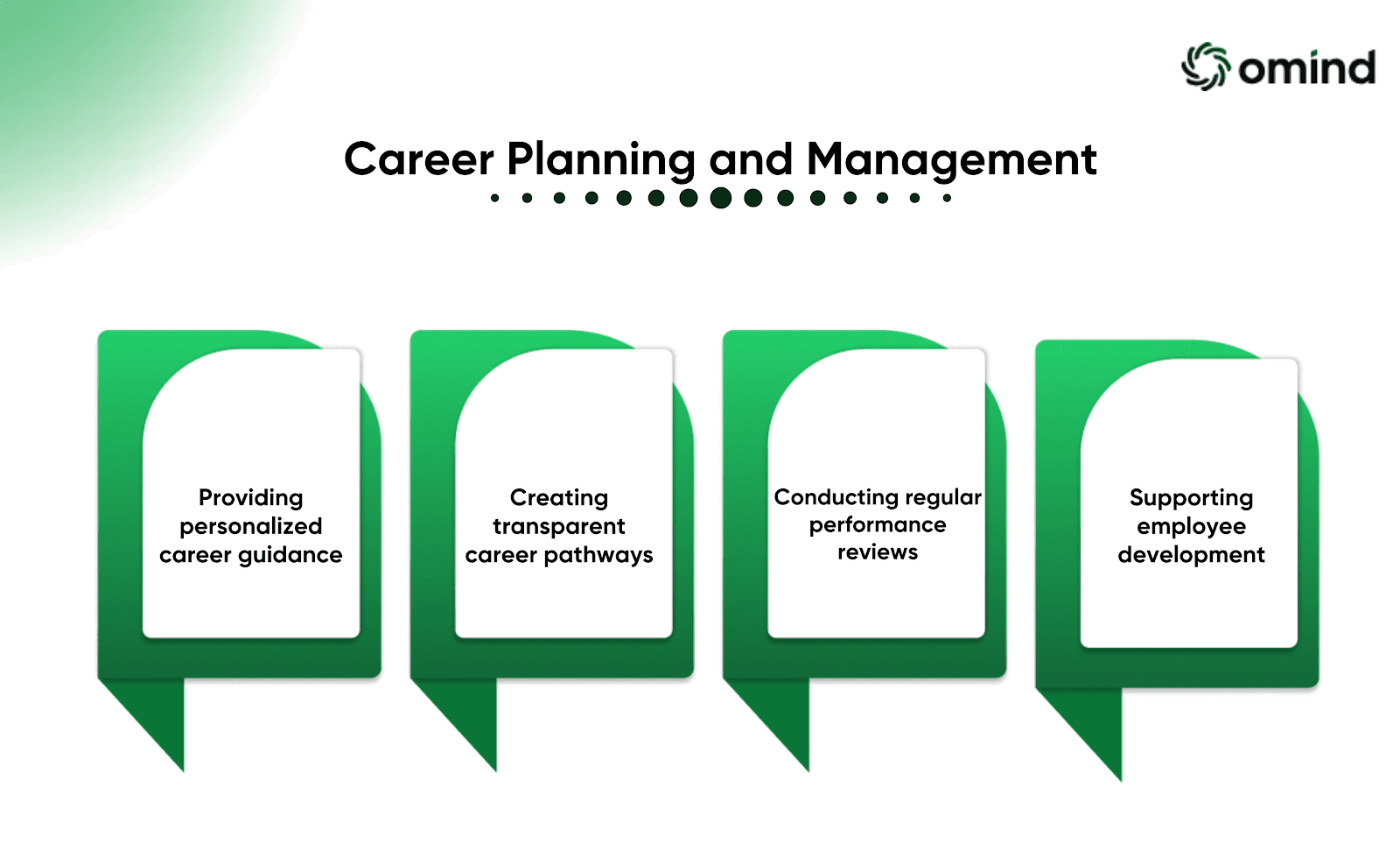The HR life cycle is a strategic framework that guides organizations through the various stages of employee management. From attracting and recruiting talent to offboarding them, each stage plays a critical role in the success of a business. Let’s take a look at the key stages of the HR cycle in any company, as well as some practical insights for HR professionals.
Attraction and Recruitment

Alt text: Stages of the HR Life Cycle
The first stage of the HR cycle involves attracting and recruiting qualified candidates. To effectively achieve this, organizations must:
Craft a compelling organizational brand: A strong brand attracts top talent and builds a positive employer-employee relationship.
Build a robust candidate pipeline: Proactive recruitment efforts are essential to ensure a steady flow of qualified applicants.
Implement a transparent selection process: A fair and unbiased selection process enhances the candidate experience and builds trust.
Track relevant metrics: Analyzing candidate demographics and application completion rates provides valuable insights for optimizing recruitment strategies.
Induction and Onboarding
Once a candidate is hired, the induction and onboarding process commences. This stage is where the HR personnel integrate new employees into the organization's culture and pave the way for their association together. Key activities during this phase include clearly communicating job roles, responsibilities, and performance expectations. This ensures that new hires have a clear understanding of their duties and the standards expected of them. Use employee experience solutions such as AI QMS by Omind to make the onboarding a breeze.
This phase is also a good time to provide opportunities for new employees, to familiarize themselves with the organization's values, mission, and allow for a bit of cultural immersion. It’s also important that structure and support be introduced to the work hours, to make new hires truly feel like a part of the team. Don’t forget to track the time spent in achieving productivity, to assess the effectiveness of the onboarding process.
Employee Development
To retain and nurture top talent during the HR cycle, organizations must prioritize employee development. They must provide ample opportunities for learning, growth, and career advancement. This is how organizations can equip their employees with the necessary skills and knowledge to succeed. It’s also important to collaborate with employees to create personalized Personal Development Plans (PDPs) that allow them to set clear career goals and develop tailored strategies to achieve them.
Encouraging the growth of future leaders through leadership development and mentorship programs can also strengthen the organization's talent pipeline and create a culture of mentorship. By tracking employee performance and productivity post-training, organizations can effectively evaluate the ROI of their training programs, ensuring that their development efforts are aligned with their strategic objectives.
Engagement and Retention
Engaged employees are a valuable asset to any organization, as they exhibit greater productivity, satisfaction, and loyalty. To improve employee engagement and retention, organizations must prioritize initiatives that promote job satisfaction and well-being. This includes creating a positive work environment, offering competitive compensation and benefits, and investing in employee development. They should also maintain open and regular communication channels with employees, which is crucial to understand them and build trust.
To assess the effectiveness of engagement efforts, it is essential to track key metrics such as employee retention rate, voluntary turnover, and employee net promoter score (eNPS). These metrics provide valuable insights into employee satisfaction and loyalty, allowing organizations to identify areas for improvement and optimize their engagement strategies.
Career Planning and Management

In previous years, an employee’s primary goal in life was typically to have a long-lasting career, especially within one place. However, times have changed, and people now switch between organizations much sooner, because of dissatisfaction with their role, or with the company. The Great Resignation of 2021 and 2022 was an example of this: Nearly 24 million Americans quit their jobs in this period. Therefore, effective career planning and management help employees stick to one role, achieve their career goals and become an important cog in the organization’s engine. Key activities to make your employee feel included are:
Providing personalized career guidance: Help employees identify their strengths, weaknesses, and career aspirations.
Creating transparent career pathways: Outline clear paths for advancement within the organization.
Conducting regular performance reviews: Provide feedback and opportunities for growth.
Supporting employee development: Invest in training and development to help employees advance in their careers.
Rewards and Recognition
Recognizing and rewarding employees is a fundamental strategy in the HR cycle for employee retention, boosting morale, and driving exceptional performance. By celebrating achievements and milestones through well-structured recognition programs, organizations can create a positive and supportive work environment. These programs can range from public acknowledgments to personalized awards, reinforcing the value employees bring to the company. Solutions like Omind’s AI QMS measure how employees feel about their experiences with the organization and let employers take measures accordingly.
Offering rewards: A combination of monetary and non-monetary rewards can increase employee motivation. Bonuses or salary increases provide tangible incentives for outstanding performance, but non-monetary rewards, such as additional time off, professional development opportunities, or public recognition, can also be highly motivating, especially when tailored to individual preferences and needs.
Monitor employee satisfaction: Tracking employee satisfaction and engagement levels is crucial to measure the effectiveness of reward programs. By using metrics such as employee net promoter score (eNPS), employee satisfaction surveys, and turnover rates, organizations can assess the impact of rewards on employee morale, productivity, and overall well-being. This data can help identify areas for improvement and optimize reward programs to ensure they are driving the desired outcomes.
Offboarding and Exit
When employees do decide to end their association with the company, the subsequent offboarding process for them is a critical aspect of the HR cycle, as it can significantly impact an organization's reputation and the morale of remaining employees. A well-executed offboarding process ensures a smooth transition for departing employees and helps maintain positive relationships. HR teams should make sure that exit interviews take place, as they are a valuable tool for gathering feedback on the employee's experience and identifying areas for improvement. By understanding the reasons for an employee's departure, organizations can take steps to address any underlying issues and enhance their retention efforts.
It’s also important to try and maintain positive relationships with departing employees is essential for preserving the organization's reputation and a positive employer brand. Parting ways on good terms can leave a lasting impression and encourage former employees to remain ambassadors for the company.
Finally, tracking offboarding metrics allows organizations to evaluate the effectiveness of their offboarding process and identify areas for improvement. By measuring factors such as employee satisfaction during the offboarding process and the timeliness of exit paperwork, organizations can ensure a smooth transition for departing employees and themselves.
Conclusion
The HR cycle is a dynamic framework that guides organizations through the various stages of employee management. By effectively managing each stage, organizations can create a positive work environment, attract and retain top talent.
For the best in workplace experience augmentation, use Omind’s solutions, built with the power of AI and automation, to make the entire HR cycle a breeze. Click here to start the journey.
AUTHOR
Team Omind
Empowering Businesses with Unified Customer Experience Platform, Leveraging Advanced AI and Intelligent Automation
PRODUCT
Employee Life Cycle Management
Share LINK
Related Blogs



